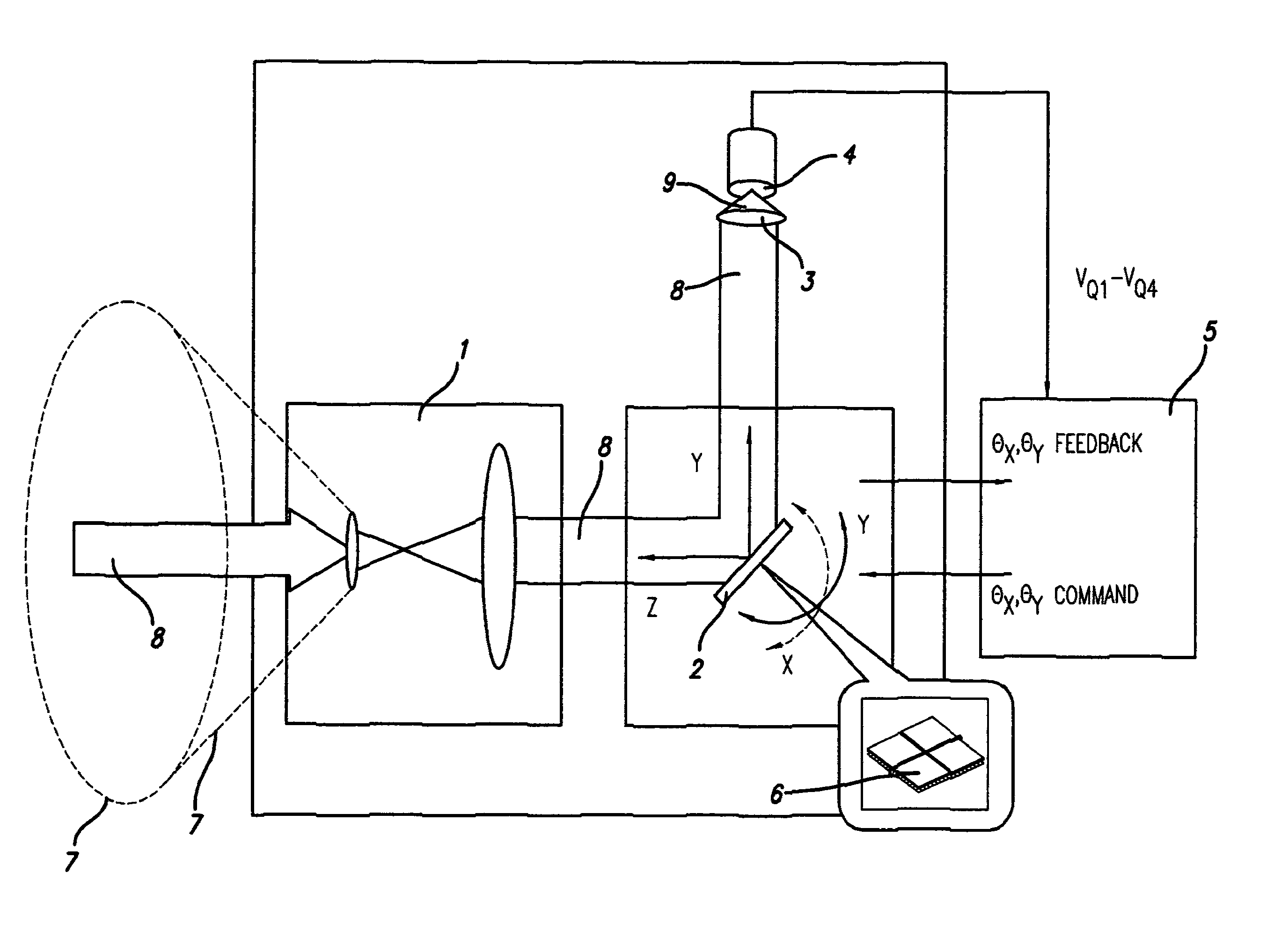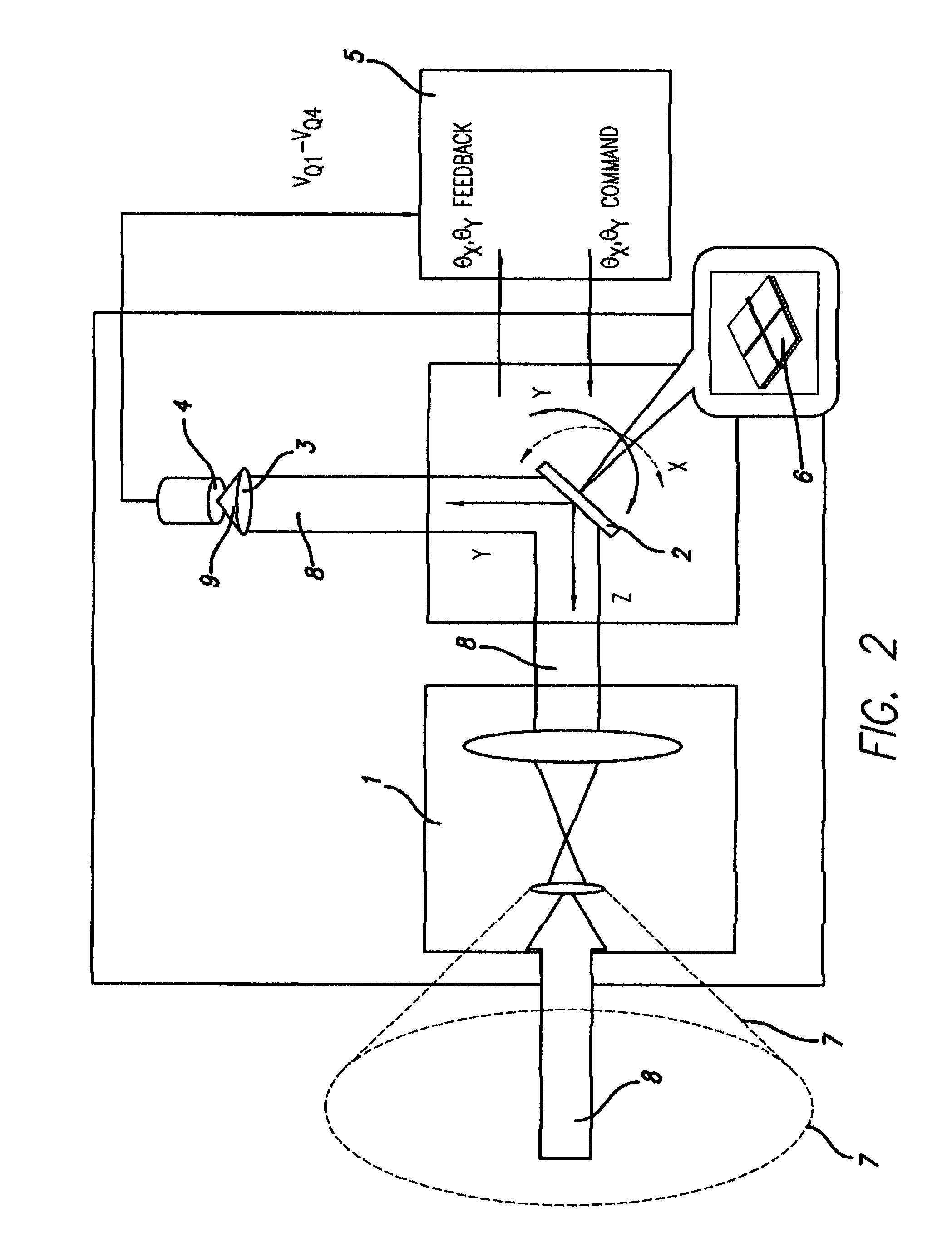Image null-balance system with multisector-cell direction sensing
a null-balance system and multi-sector technology, applied in the direction of distance measurement, instruments, surveying and navigation, etc., can solve the problems of manned and unmanned apparatuses, system response is relatively slow, and the line-of-sight measurement is relatively inaccurate, so as to facilitate the discrimination of plural and even multiple incident light beams.
- Summary
- Abstract
- Description
- Claims
- Application Information
AI Technical Summary
Benefits of technology
Problems solved by technology
Method used
Image
Examples
Embodiment Construction
[0079]Preferred embodiments of the invention include an afocal MEMS beam-steering system with a multiple-sector sensing cell. The multisector cell may have four sectors—i.e., may be a four-sector cell or so-called “quad cell”, as described in the “BACKGROUND” section of this document—or may have a different number of sectors. A higher number, in particular, facilitates independent discrimination and analysis of two or more incident beams; however, a sensor having three sectors is also workable and within the scope of the invention.
[0080]The multisector cell (e.q. quad sensor) at least initially sees the entire field-of-view (“FOV”) and receives the incoming laser beam, preferably focused sharply. Ideally it is focused to a substantially diffraction-limited spot.
[0081]Use of a sharp focus departs very dramatically and surprisingly from the conventional practice, introduced in the “BACKGROUND” section, of defocusing the beam to facilitate operation of a quad cell. The larger spot size...
PUM
 Login to View More
Login to View More Abstract
Description
Claims
Application Information
 Login to View More
Login to View More - R&D
- Intellectual Property
- Life Sciences
- Materials
- Tech Scout
- Unparalleled Data Quality
- Higher Quality Content
- 60% Fewer Hallucinations
Browse by: Latest US Patents, China's latest patents, Technical Efficacy Thesaurus, Application Domain, Technology Topic, Popular Technical Reports.
© 2025 PatSnap. All rights reserved.Legal|Privacy policy|Modern Slavery Act Transparency Statement|Sitemap|About US| Contact US: help@patsnap.com



